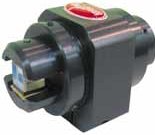 rotation
to isolate the source and protect the laser oscillator from reflections in an
optical system. In other words, they basically act as an optical diode allowing
the propagation of light in only one direction.
rotation
to isolate the source and protect the laser oscillator from reflections in an
optical system. In other words, they basically act as an optical diode allowing
the propagation of light in only one direction. Q & A - What is a Faraday Optical Isolator and How Does it Work?
Del Mar Photonics - Kirra Faraday Isolator brochure - Faraday Isolator Models - request a quote
Del Mar Photonics - Newsletter
At high powers optical feedback can damage or disrupt the operation of a
laser system. To reduce this feedback, an optical isolator can be inserted into
the system. Faraday optical isolators (based on the Faraday effect) are passive
unidirectional, nonreciprocal devices that utilize the phenomenon of
magneto-optic
 rotation
to isolate the source and protect the laser oscillator from reflections in an
optical system. In other words, they basically act as an optical diode allowing
the propagation of light in only one direction.
rotation
to isolate the source and protect the laser oscillator from reflections in an
optical system. In other words, they basically act as an optical diode allowing
the propagation of light in only one direction.
Faraday isolators (see Figure 1) typically consist of a Faraday rotator, two
polarizers, and a body to house the parts. The Faraday rotator, in turn,
consists of magnetooptically active optical material placed inside a permanent
magnet (Nd-Fe-B).
In the Faraday optical isolator shown in Figure 2, the magneto-optical rod
(located inside the Faraday rotator) is cut from glass (MOS-10) polished to
flatness of ![]() /10, and has parallelism
better than 10 arc seconds.
/10, and has parallelism
better than 10 arc seconds.
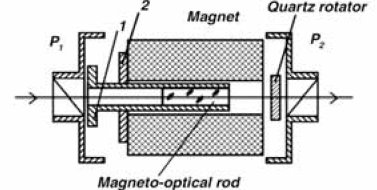 It
is anti-reflection coated with residual reflection <0.2% (each side) in the
765-835 nm range. The polarizers are air-spaced Glan prisms made of calcite.
Entrance and exit faces of polarizers are anti-reflection coated with residual
reflection of <0.3% in the range. Polarizer transmittance is >98%. This gives a
total transmittance of better than 85% for the isolator.
It
is anti-reflection coated with residual reflection <0.2% (each side) in the
765-835 nm range. The polarizers are air-spaced Glan prisms made of calcite.
Entrance and exit faces of polarizers are anti-reflection coated with residual
reflection of <0.3% in the range. Polarizer transmittance is >98%. This gives a
total transmittance of better than 85% for the isolator.
Laser light (polarized or unpolarized) enters the input polarizer (P1) and is linearly polarized to 0°. Next, the linearly polarized light enters the Faraday rotator rod (magneto-optical rod). The plane of polarization rotates as the light propagates along the axis of the rod. The Faraday rotator is tuned to rotate the plane of polarization by 45°. (Changing the position of the rod allows tuning over a wavelength range from 765-835 nm.) The light then passes through the output polarizer (P2) whose transmission axis is also at 45°.
Any back reflected light re-enters the isolator through the output polarizer and becomes polarized at 45°. The back reflected light then passes through the Faraday rotator, which produces another 45° of rotation, and is now polarized at 90°, or horizontally, before being stopped by the input polarizer, still at 0°. Thus, the laser is isolated from its own reflections that may occur in the application part of the optical set.
This information was contributed by Sergey Egorov for Del Mar Photonics, located in San Diego, CA.
Del Mar Photonics - Kirra Faraday Isolator brochure - Faraday Isolator Models
Broadband Faraday Isolator for Femtosecond Ti:Sapphire Laser
Product news and updates - Training Workshops
- Featured Customer - Other News
 |
Near Field Scanning Optical Microscope
NSOM Godwit - best spatial optical resolution using the near field scanning optical microscope
(NSOM) principle |
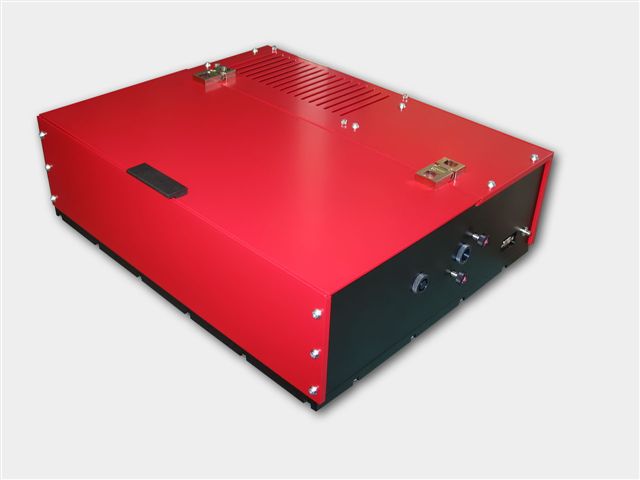 |
Trestles LH Ti:Sapphire
laser Trestles LH is a new series of high quality femtosecond Ti:Sapphire lasers for applications in scientific research, biological imaging, life sciences and precision material processing. Trestles LH includes integrated sealed, turn-key, cost-effective, diode-pumped solid-state (DPSS). Trestles LH lasers offer the most attractive pricing on the market combined with excellent performance and reliability. DPSS LH is a state-of-the-art laser designed for today’s applications. It combines superb performance and tremendous value for today’s market and has numerous advantages over all other DPSS lasers suitable for Ti:Sapphire pumping. Trestles LH can be customized to fit customer requirements and budget. Reserve a
spot in our Femtosecond lasers training
workshop in San Diego, California. Come to learn how to build a
femtosecond laser from a kit |
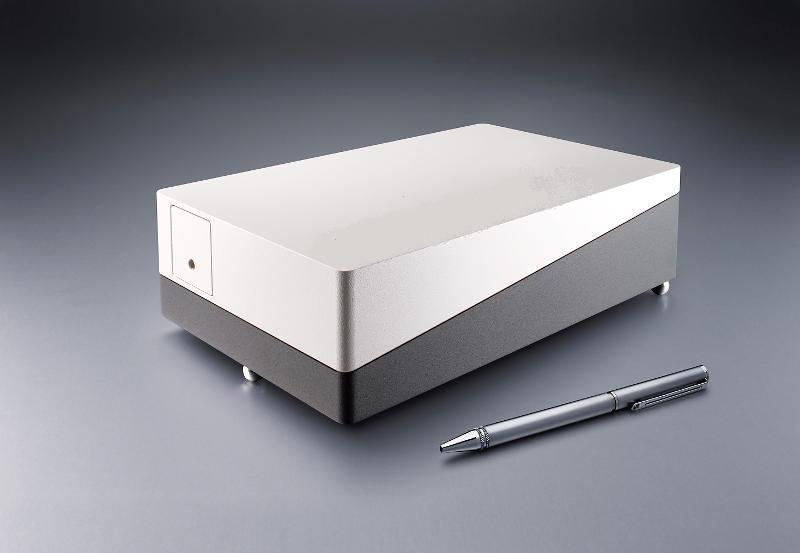 |
DPSS DMPLH lasers |
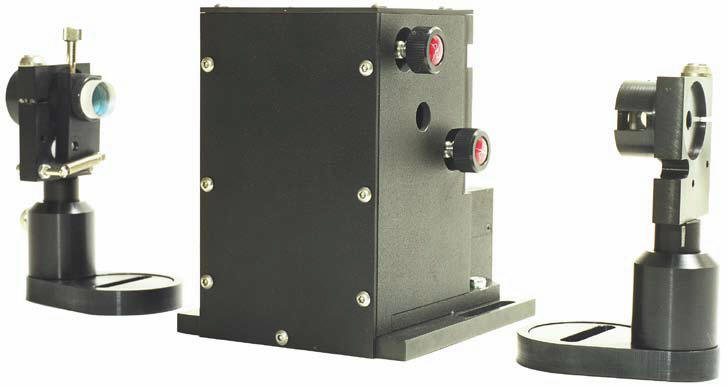 |
Pismo pulse picker The Pismo pulse picker systems is as a pulse gating system that lets single pulses or group of subsequent pulses from a femtosecond or picosecond pulse train pass through the system, and stops other radiation. The system is perfectly suitable for most commercial femtosecond oscillators and amplifiers. The system can pick either single pulses, shoot bursts (patterns of single pulses) or pick group of subsequent pulses (wider square-shaped HV pulse modification). HV pulse duration (i.e. gate open time) is 10 ns in the default Pismo 8/1 model, but can be customized from 3 to 1250 ns upon request or made variable. The frequency of the picked pulses starts with single shot to 1 kHz for the basic model, and goes up to 100 kHz for the most advanced one. The Pockels cell is supplied with a control unit that is capable of synching to the optical pulse train via a built-in photodetector unit, while electric trigger signal is also accepted. Two additional delay channels are available for synching of other equipment to the pulse picker operation. Moreover, USB connectivity and LabView-compatible drivers save a great deal of your time on storing and recalling presets, and setting up some automated experimental setups. One control unit is capable of driving of up to 3 Pockels cells, and this comes handy in complex setups or contrast-improving schemes. The system can also be modified to supply two HV pulses to one Pockels cell unit, making it a 2-channel pulse picker system. This may be essential for injection/ejection purposes when building a regenerative or multipass amplifier system. |
 |
Tourmaline Yb-SS-1058/100 Femtosecond solid state laser system The Yb-doped Tourmaline Yb-SS laser radiates at 1058±2 nm with more than 1 W of average power, and enables the user to enjoy Ti:Sapphire level power at over-micron wavelengths. This new design from Del Mar's engineers features an integrated pump diode module for greater system stability and turn-key operation. The solid bulk body of the laser ensures maximum rigidity, while self-starting design provides for easy "plug-and-play" operation. |
 |
New laser spectrometer
T&D-scan for research that
demands high resolution and high spectral
density in UV-VIS-NIR spectral domains - now available with
new pump option! The T&D-scan includes a CW ultra-wide-tunable narrow-line laser, high-precision wavelength meter, an electronic control unit driven through USB interface as well as a software package. Novel advanced design of the fundamental laser component implements efficient intra-cavity frequency doubling as well as provides a state-of-the-art combined ultra-wide-tunable Ti:Sapphire & Dye laser capable of covering together a super-broad spectral range between 275 and 1100 nm. Wavelength selection components as well as the position of the non-linear crystal are precisely tuned by a closed-loop control system, which incorporates highly accurate wavelength meter. Reserve a
spot in our CW lasers training
workshop in San Diego, California. Come to
learn how to build a
CW
Ti:Sapphire laser from a kit |
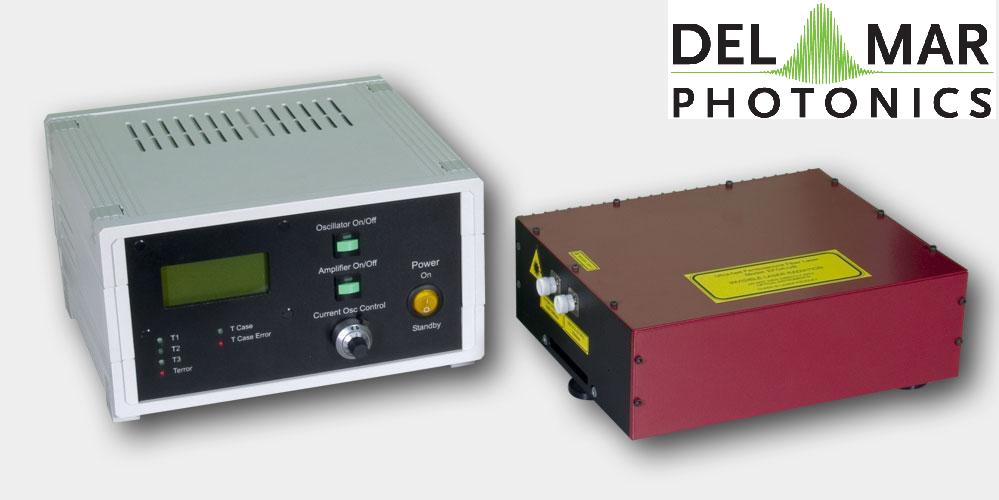 |
Femtosecond fiber laser Model Pearl-70P300
-
request a quote Femtosecond pulsed lasers are used in many fields of physics, biology, medicine and many other natural sciences and applications: material processing, multiphoton microscopy, «pump-probe» spectroscopy, parametric generation and optical frequency metrology. Femtosecond fiber lasers offer stable and steady operation without constant realignment. The Pearl-70P300 laser comprises: a passively mode-locked fiber laser, providing pulses with repetition rate 60 MHz and having duration of 250-5000 fs, an amplifier based on Er3+ doped fiber waveguide with pumping by two laser diodes, a prism compressor for amplified pulse compression. Pearl Ultra-Compact Ultrafast Picosecond Fiber Oscillator |
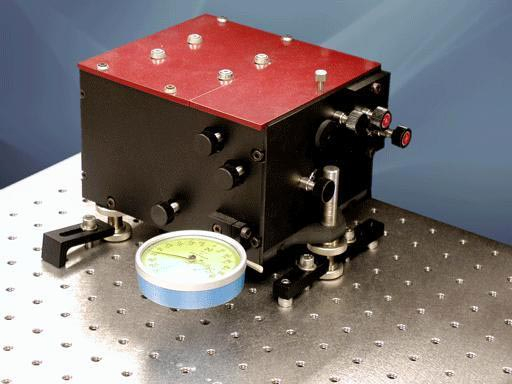 |
Reef femtosecond autocorrelators The autocorrelation technique is the most common method used to determine laser pulse width characteristics on a femtosecond time scale. The basic optical configuration of the autocorrelator is similar to that of an interferometer (Figure.1). An incoming pulse train is split into two beams of equal intensity. An adjustable optical delay is inserted into one of the arms. The two beams are then recombined within a nonlinear material (semiconductor) for two photon absorption (TPA). The incident pulses directly generate a nonlinear TPA photocurrent in the semiconductor, and the detection of this photocurrent as a function of interferometer optical delay between the interacting pulses yields the pulse autocorrelation function. The TPA process is polarization-independent and non-phasematched, simplifying alignment. Reef-RT autocorrelator measures laser pulse durations ranging from 20 femtoseconds to picosecond regime. It measures pulse widths from both low energy, high repetition rate oscillators and high energy, low repetition rate amplifiers. Compact control unit operates autocorrelator head and optional spectrometer through on-screen menus. Autocorrelation trace and spectrum can be displayed and analyzed on screen or downloaded to remote computer. New: Reef-20DDR autocorrelator - Multishot-FROG for femtosecond fiber laser oscillator and amplifier Collinear (interferometric) autocorrelation for 1300-2000 nm wavelength range |
 |
Near IR viewers Ultraviolet viewers are designed to observe radiation emitted by UV sources. |
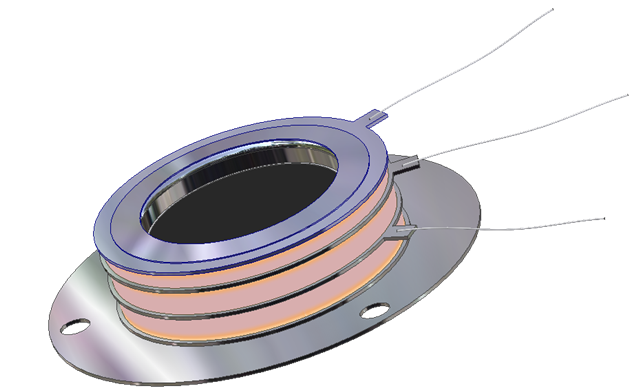 |
Open Microchannel Plate Detector
MCP-MA25/2 -
now in stock! |
 |
Hummingbird EMCCD camera The digital Hummingbird EMCCD camera combines high sensitivity, speed and high resolution. It uses Texas Instruments' 1MegaPixel Frame Transfer Impactron device which provides QE up to 65%. Hummingbird comes with a standard CameraLink output. It is the smallest and most rugged 1MP EMCCD camera in the world. It is ideally suited for any low imaging application such as hyperspectral imaging, X-ray imaging, Astronomy and low light surveillance. It is small, lightweight, low power and is therefore the ideal camera for OEM and integrators. buy online |
 |
Hatteras-D
femtosecond transient absorption data acquisition system Future nanostructures and biological nanosystems will take advantage not only of the small dimensions of the objects but of the specific way of interaction between nano-objects. The interactions of building blocks within these nanosystems will be studied and optimized on the femtosecond time scale - says Sergey Egorov, President and CEO of Del Mar Photonics, Inc. Thus we put a lot of our efforts and resources into the development of new Ultrafast Dynamics Tools such as our Femtosecond Transient Absorption Measurements system Hatteras. Whether you want to create a new photovoltaic system that will efficiently convert photon energy in charge separation, or build a molecular complex that will dump photon energy into local heat to kill cancer cells, or create a new fluorescent probe for FRET microscopy, understanding of internal dynamics on femtosecond time scale is utterly important and requires advanced measurement techniques. Reserve a
spot in our Ultrafast Dynamics Tools
training workshop in San Diego, California. |
|
|
Beacon Femtosecond Optically Gated Fluorescence Kinetic Measurement System
-
request a quote -
pdf Reserve a
spot in our Ultrafast Dynamics Tools
training workshop in San Diego, California. |
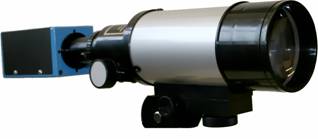 |
Wavefront Sensors: ShaH Family A family of ShaH wavefront sensors represents recent progress of Del Mar Photonics in Shack-Hartmann-based technology. The performance of Shack-Hartmann sensors greatly depends on the quality of the lenslet arrays used. Del Mar Photonics. developed a proprietary process of lenslet manufacturing, ensuring excellent quality of refractive lenslet arrays. The arrays can be AR coated on both sides without interfering with the micro-lens surface accuracy. Another advantage of the ShaH wavefront sensors is a highly optimized processing code. This makes possible real-time processing of the sensor data at the rate exceeding 1000 frames per second with a common PC. Due to utilizing low-level programming of the video GPU, it is possible to output the wavefront data with a resolution up to 512x512 pixels at a 500+ Hz frame rate. This mode is favorable for controlling modern LCOS wavefront correctors. The family of ShaH wavefront sensors includes several prototype models, starting from low-cost ShaH-0620 suitable for teaching laboratory to a high-end high-speed model, ShaH-03500. The latter utilizes a back-illuminated EM-gain CCD sensor with cooling down to -100°C. This makes it possible to apply such a wavefront sensor in astronomy, remote sensing, etc. |
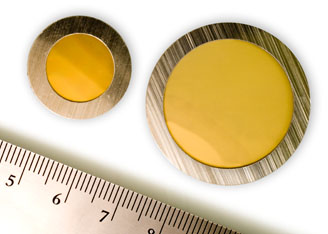 |
Terahertz systems, set ups and components New band pass and long pass THz optical filters based on porous silicon and metal mesh technologies. Band pass filters with center wavelengths from 30 THz into GHz range and transmissions up to 80% or better. Standard designs with clear aperture diameters from 12.5 to 37.5 mm. Long pass filters with standard rejection edge wavelengths from 60 THz into GHz range. Maximum transmission up to 80% or better, standard designs at 19.0 and 25.4 mm diameters. Excellent thermal (from cryogenic to 600 K) and mechanical properties THz products: Portable Terahertz Source THz Spectrometer kit with Antenna THz transmission setup THz time domain spectrometer Pacifica fs1060pca THz time domain spectrometer Pacifica fs780pca THz detectors: Golay cell and LiTaO3 piroelectric detectors PCA - Photoconductive Antenna as THz photomixer Pacifica THz Time Domain Spectrometer - Trestles Pacifica Holographic Fourier Transform Spectrometer for THz Region Wedge TiSapphire Multipass Amplifier System - THz pulses generation Terahertz Spectroscopic Radar Mobile System for Detection of Concealed Explosives Band pass filters with center wavelengths from 30 THz into GHz range Long pass filters with standard rejection edge wavelengths from 60 THz into GHz range Generation of THz radiation using lithium niobate Terahertz crystals (THz): ZnTe, GaAs, GaP, LiNbO3 - Wedge ZnTe Silicon Viewports for THz radiation Aspheric collimating silicon lens - Aspheric focusing silicon lens |
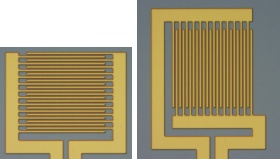 |
iPCA - interdigital Photoconductive Antenna for terahertz waves Large area broadband antenna with lens array and high emitter conversion efficiency iPCA with LT-GaAs absorber, microlens array for laser excitation wavelengths l £ 850 nm, adjusted hyperhemispherical silicon lens with a high power conversion efficiency of 0.2 mW THz power / W optical power. The iPCA can be used also as large area THz detector. The two types iPCAp and iPCAs have the same active interdigital antenna area but different contact pad directions with respect to the electrical THz field. Interdigital Photoconductive Antenna for terahertz waves generation using femtosecond Ti:Sapphire laser THz books |
Training Workshops
|
|
Come to San Diego next summer! Attend one of our training workshops in San Diego, California
during summer 2011 Del Mar Photonics has presented training workshops for customers and potential customers in the past 3 years. Our workshops cover scientific basics, technical details and provide generous time for hands-on training. Each workshop is a three-day seminar conducted by professional lecturer from 10am to 4pm. It includes lunch, as well as a training materials. We have also reserved two days for Q&A sessions, one-on-one system integration discussions, social networking, and San Diego sightseeing.
The following training workshops will be offered during this
summer: |
Featured Customer
|
|
Trestles LH10-fs/CW laser system at UC Santa Cruz Center of Nanoscale Optofluidics
Del
Mar Photonics offers new
Trestles fs/CW laser system which can be easily
switched from femtosecond mode to CW and back. Having both modes of operation in one system dramatically increase a
number of applications that the laser can be used for, and makes it an ideal
tool for scientific lab involved in multiple research projects. |
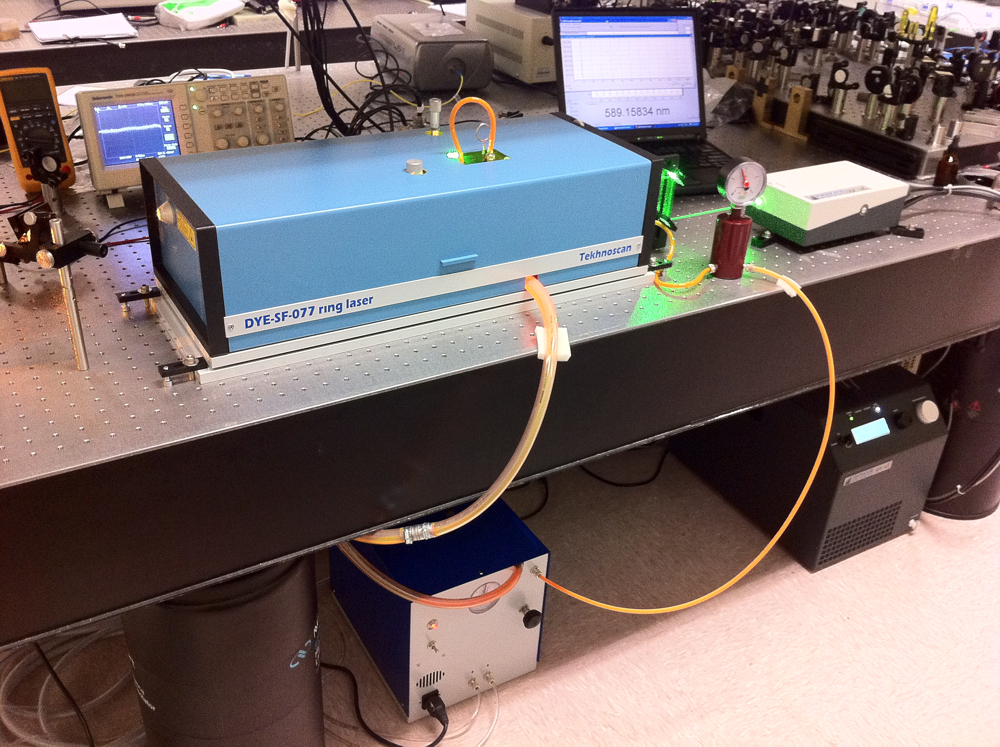 |
Frequency-stabilized CW single-frequency ring Dye laser DYE-SF-077 pumped by DPSS DMPLH laser installed in the brand new group of Dr. Dajun Wang at the The Chinese University of Hong Kong. DYE-SF-077 features exceptionally narrow generation line width, which amounts to less than 100 kHz. DYE-SF-077 sets new standard for generation line width of commercial lasers. Prior to this model, the narrowest line-width of commercial dye lasers was as broad as 500 kHz - 1 MHz. It is necessary to note that the 100-kHz line-width is achieved in DYE-SF-077 without the use of an acousto-optical modulator, which, as a rule, complicates the design and introduces additional losses. A specially designed ultra-fast PZT is used for efficient suppression of radiation frequency fluctuations in a broad frequency range. DYE-SF-077 will be used in resaerch of Ultracold polar molecules, Bose-Einstein condensate and quantum degenerate Fermi gas and High resolution spectroscopy |
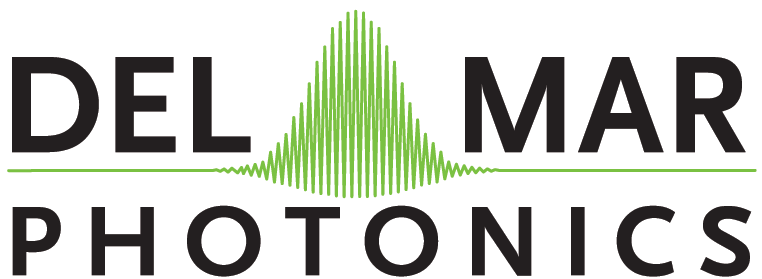
Del Mar Photonics, Inc.
4119 Twilight Ridge
San Diego, CA 92130
tel: (858) 876-3133
fax: (858) 630-2376
Skype: delmarphotonics
sales@dmphotonics.com